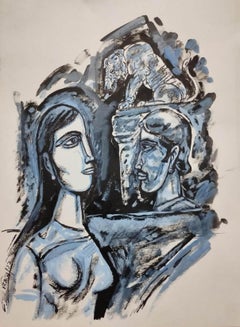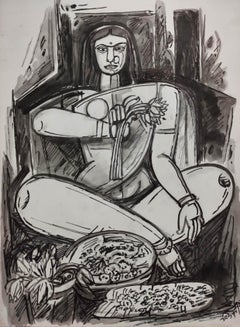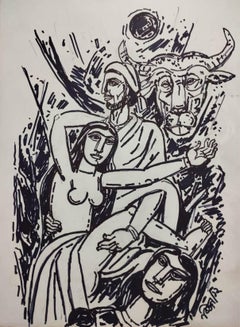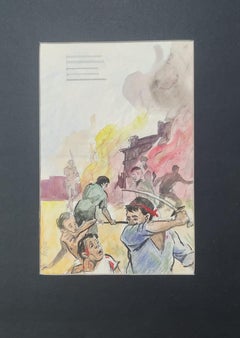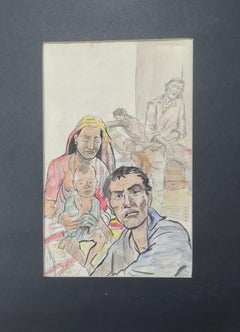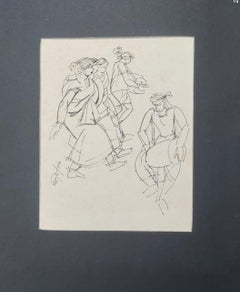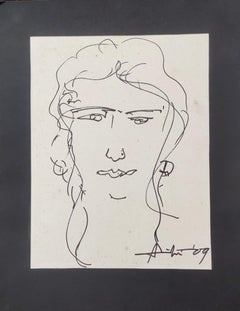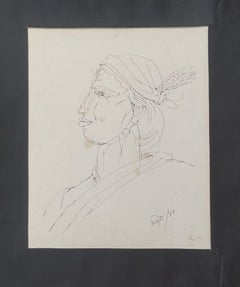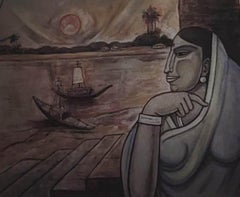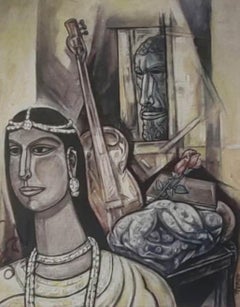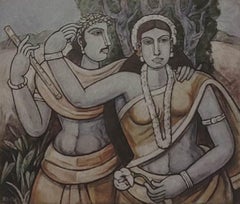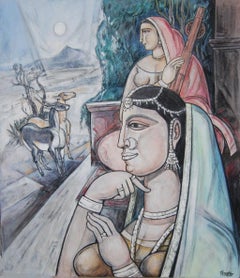Bijan Choudhury
2010s Modern Figurative Paintings
Paper, Mixed Media
2010s Modern Figurative Paintings
Paper, Mixed Media
2010s Modern Figurative Paintings
Paper, Mixed Media
Early 2000s Modern Figurative Paintings
Paper, Mixed Media
Early 2000s Modern Figurative Paintings
Paper, Mixed Media
Early 2000s Modern Figurative Paintings
Paper, Ink
Early 2000s Modern Figurative Paintings
Paper, Ink
Early 2000s Modern Figurative Paintings
Paper, Ink
Early 2000s Modern Figurative Paintings
Canvas, Mixed Media
Early 2000s Modern Figurative Paintings
Canvas, Mixed Media
Early 2000s Modern Figurative Paintings
Canvas, Mixed Media
Early 2000s Modern Figurative Paintings
Canvas, Mixed Media, Acrylic
Early 2000s Modern Figurative Paintings
Canvas, Mixed Media, Acrylic
Early 2000s Modern Figurative Paintings
Canvas, Mixed Media, Oil, Acrylic
Early 2000s Modern Figurative Paintings
Canvas, Mixed Media, Charcoal, Oil, Acrylic
Early 2000s Modern Figurative Paintings
Canvas, Mixed Media
Early 2000s Modern Figurative Paintings
Canvas, Oil, Acrylic
Early 2000s Modern Figurative Paintings
Canvas, Oil, Acrylic
Recent Sales
Early 2000s Modern Figurative Paintings
Canvas, Mixed Media
Early 2000s Modern Figurative Paintings
Canvas, Mixed Media
People Also Browsed
18th Century Rajput Figurative Drawings and Watercolors
Gold
20th Century Bangladeshi Mid-Century Modern Paintings
Canvas
1990s Modern Figurative Paintings
Paper, Woodcut
Early 2000s Contemporary Landscape Drawings and Watercolors
Paper, Ink
1990s Abstract Abstract Prints
Lithograph
Early 2000s Modern Mixed Media
Paper, Pastel, Mixed Media, Ink
Jogen ChowdhuryUntitled, Figurative, Ink & Pastel on Paper by Artist Jogen Chowdhury "In Stock, 2003
1970s Abstract Prints
Engraving
Bijan Choudhury For Sale on 1stDibs
How Much is a Bijan Choudhury?
Bijan Choudhury for sale on 1stDibs
Bijan Choudhury was born in Faridpur, Bangladesh. He moved to Calcutta, where he studied at the Government College of Art and Craft, but because of his Marxist beliefs, he was expelled before he could graduate. Choudhury returned to Bengal and graduated from the Dhaka Art College (now the University of Dhaka). Choudhury was one of the artists that formed the Society of Contemporary Artists in 1960. In 1964 together with Nikhil Biswas, Prakash Karmakar, Rabin Mondal, Jogen Chowdhury and Dharaj Chowdhury, he founded the Calcutta Painters to break from the traditions of the Bengal School of Art. In the late 70s, he became head of the Indian College of Art and Draftsmanship. Choudhury has had several exhibitions. He received “Abanindra Puroshkar,” Government of West Bengal, Calcutta. He received the “William Carey Award” in 1955, Academy of Fine Arts Award, Calcutta in 1963, “Rabindra Bharati Award,” Calcutta and Documentary colored film entitled Bijan, made by Film Australia, Film Division of Government of Australia in 1978. After his death, an exhibition of his paintings was arranged by the Bengal Gallery of Fine Arts at the Bengal Gallery in 2012.
A Close Look at Modern Art
The first decades of the 20th century were a period of artistic upheaval, with modern art movements including Cubism, Surrealism, Futurism and Dadaism questioning centuries of traditional views of what art should be. Using abstraction, experimental forms and interdisciplinary techniques, painters, sculptors, photographers, printmakers and performance artists all pushed the boundaries of creative expression.
Major exhibitions, like the 1913 Armory Show in New York City — also known as the “International Exhibition of Modern Art,” in which works like the radically angular Nude Descending a Staircase by Marcel Duchamp caused a sensation — challenged the perspective of viewers and critics and heralded the arrival of modern art in the United States. But the movement’s revolutionary spirit took shape in the 19th century.
The Industrial Revolution, which ushered in new technology and cultural conditions across the world, transformed art from something mostly commissioned by the wealthy or the church to work that responded to personal experiences. The Impressionist style emerged in 1860s France with artists like Claude Monet, Paul Cézanne and Edgar Degas quickly painting works that captured moments of light and urban life. Around the same time in England, the Pre-Raphaelites, like Edward Burne-Jones and Dante Gabriel Rossetti, borrowed from late medieval and early Renaissance art to imbue their art with symbolism and modern ideas of beauty.
Emerging from this disruption of the artistic status quo, modern art went further in rejecting conventions and embracing innovation. The bold legacy of leading modern artists Georges Braque, Pablo Picasso, Frida Kahlo, Salvador Dalí, Henri Matisse, Joan Miró, Marc Chagall, Piet Mondrian and many others continues to inform visual culture today.
Find a collection of modern paintings, sculptures, prints and other fine art on 1stDibs.
Finding the Right Figurative-paintings for You
Figurative art, as opposed to abstract art, retains features from the observable world in its representational depictions of subject matter. Most commonly, figurative paintings reference and explore the human body, but they can also include landscapes, architecture, plants and animals — all portrayed with realism.
While the oldest figurative art dates back tens of thousands of years to cave wall paintings, figurative works made from observation became especially prominent in the early Renaissance. Artists like Michelangelo, Leonardo da Vinci and other Renaissance masters created naturalistic representations of their subjects.
Pablo Picasso is lauded for laying the foundation for modern figurative art in the 1920s. Although abstracted, this work held a strong connection to representing people and other subjects. Other famous figurative artists include Francis Bacon and Lucian Freud. Figurative art in the 20th century would span such diverse genres as Expressionism, Pop art and Surrealism.
Today, a number of figural artists — such as Sedrick Huckaby, Daisy Patton and Eileen Cooper — are making art that uses the human body as its subject.
Because figurative art represents subjects from the real world, natural colors are common in these paintings. A piece of figurative art can be an exciting starting point for setting a tone and creating a color palette in a room.
Browse an extensive collection of figurative paintings on 1stDibs.
